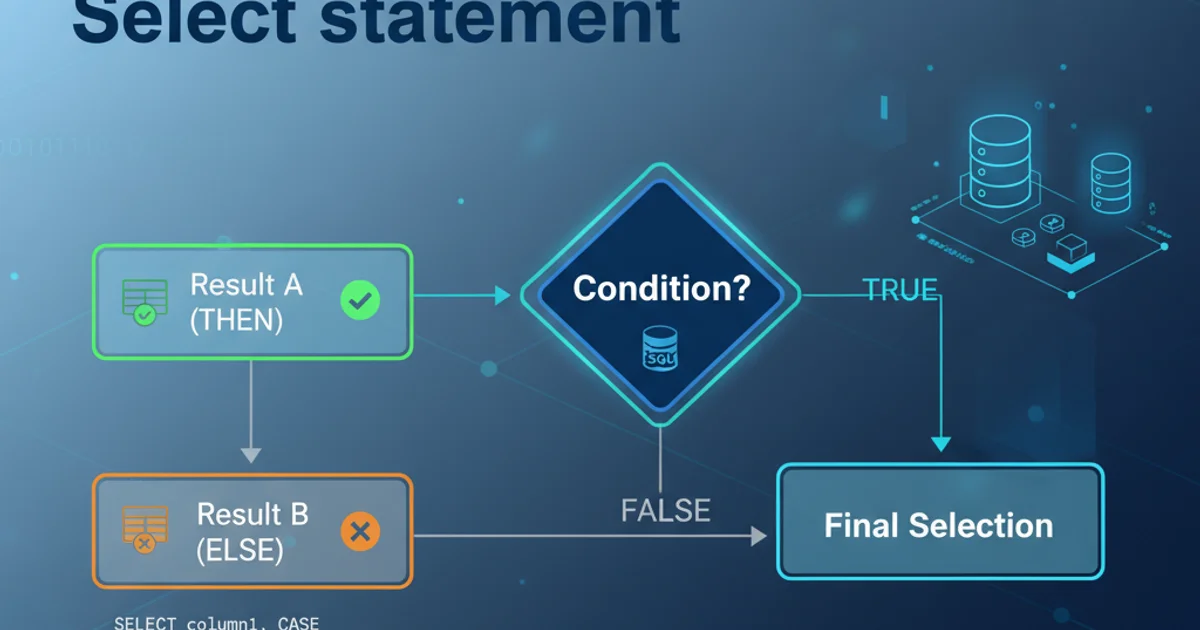Copy text from a Windows CMD window to clipboard
Categories:
Mastering the Clipboard: Copying Text from Windows CMD

Learn various methods to efficiently copy text from the Windows Command Prompt to your clipboard, from simple selections to advanced command-line tools.
The Windows Command Prompt (CMD) is a powerful tool for system administration, scripting, and development. However, one common frustration users encounter is the seemingly simple task of copying text from its output to the clipboard. Unlike modern graphical applications, CMD doesn't always offer intuitive copy-paste functionality. This article will guide you through several methods, ranging from basic mouse operations to advanced command-line techniques, ensuring you can always get the text you need out of your CMD window.
Basic Mouse-Based Copying
The most straightforward way to copy text from CMD involves using your mouse. This method is ideal for small snippets of text or when you don't want to use command-line utilities. There are two primary mouse-based approaches, depending on your CMD window's QuickEdit mode setting.
flowchart TD
A[Start CMD] --> B{Is QuickEdit Mode Enabled?}
B -- Yes --> C[Right-click to Mark]
C --> D[Select Text]
D --> E[Right-click to Copy]
B -- No --> F[Click 'Mark' in Edit Menu]
F --> D
E --> G[Text Copied to Clipboard]Flowchart for mouse-based text copying in CMD
1. Check QuickEdit Mode
Right-click on the CMD window's title bar, select 'Properties', then go to the 'Options' tab. Look for the 'QuickEdit Mode' checkbox. If it's checked, you can skip the 'Mark' step.
2. Select Text (QuickEdit On)
With QuickEdit Mode enabled, simply click and drag your mouse over the text you wish to copy. The selected text will be highlighted.
3. Select Text (QuickEdit Off)
If QuickEdit Mode is disabled, right-click on the CMD window's title bar, select 'Edit', then 'Mark'. Now you can click and drag to select the text.
4. Copy to Clipboard
After selecting the text, simply right-click anywhere within the CMD window. The selected text will automatically be copied to your clipboard. Alternatively, you can go to 'Edit' -> 'Copy' from the title bar menu.
Using Command-Line Tools: clip and Redirection
For more programmatic or automated copying, Windows provides the clip command. This utility takes input from standard input (stdin) and places it directly onto the clipboard. This is incredibly useful when you want to copy the output of another command without manual selection.
dir | clip
Copies the output of the dir command to the clipboard.
The pipe symbol (|) redirects the standard output of the dir command to the standard input of the clip command. This means whatever dir would normally print to the console is instead fed into clip, which then puts it on the clipboard.
echo Hello, World! | clip
Copies a simple string to the clipboard.
You can also copy the contents of a file directly to the clipboard using type or more in conjunction with clip.
type myfile.txt | clip
Copies the content of 'myfile.txt' to the clipboard.
clip command is available in Windows Vista and later versions. For older versions, you might need third-party utilities or more complex scripting.Advanced Copying with for /f and clip
Sometimes you need to extract specific parts of a command's output or process it before copying. The for /f command, combined with clip, offers powerful text processing capabilities. This is particularly useful for parsing structured output.
for /f "tokens=2*" %a in ('ipconfig ^| findstr /i "IPv4 Address"') do @echo %b | clip
Copies only the IPv4 address from ipconfig output to the clipboard.
In this example:
ipconfig | findstr /i "IPv4 Address"finds the line containing the IPv4 address.for /f "tokens=2*" %a in (...)processes this line.tokens=2*tellsfor /fto take the second token (the address itself) and everything after it.@echo %b | clipthen echoes this extracted part and pipes it toclip.
|) within the for /f command's in ('command') clause, you must escape them with a caret (^). For example, command1 ^| command2.